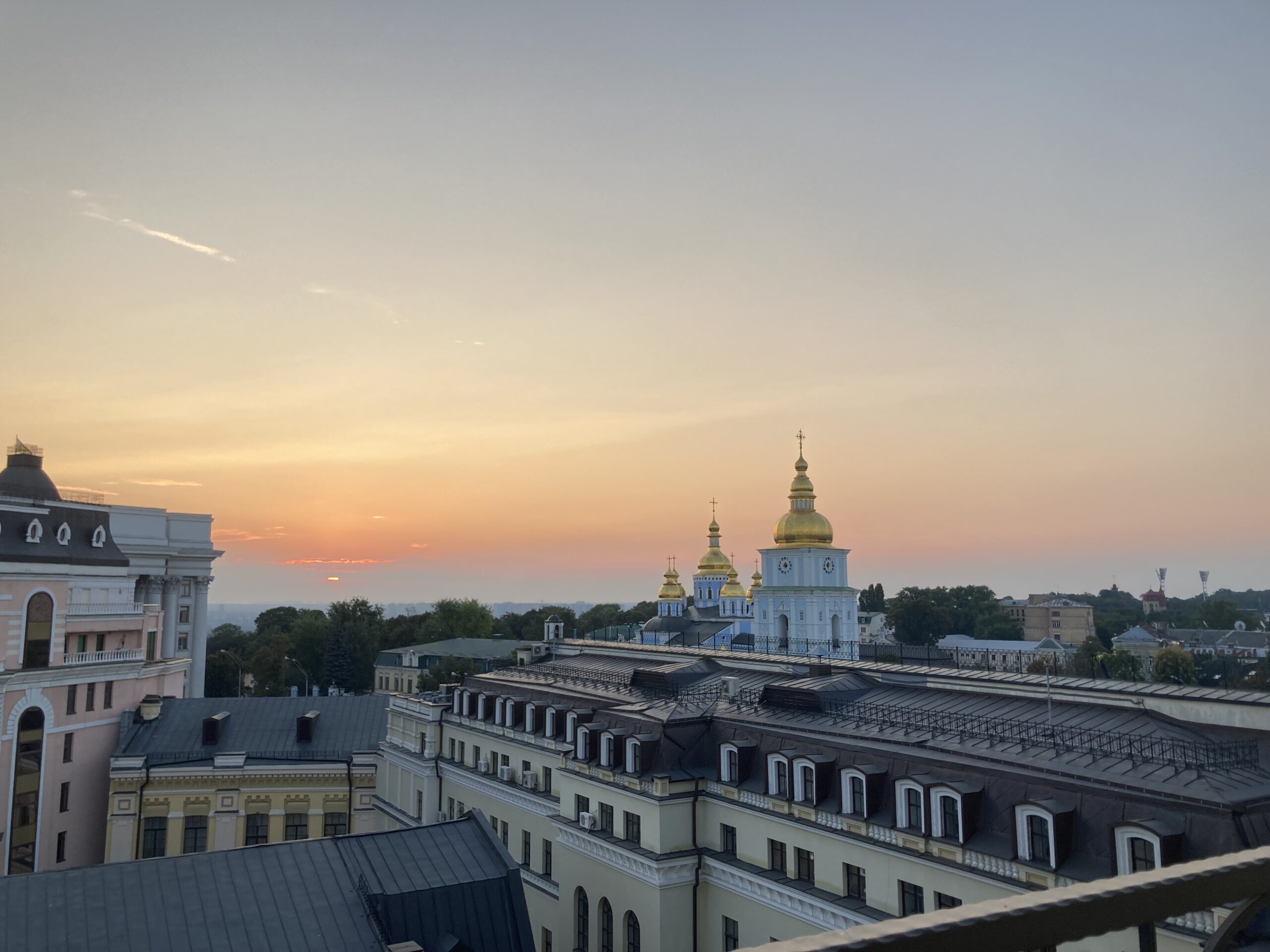The Optimistic Case for Aid to Ukraine

Ukraine is a land of duality, where high-rises tower over buildings left in rubble and the homes of oligarchs sit beside the homes of impoverished village residents. This duality comes across especially during wartime. As new and innovative restaurants, cafes, and common spaces open up, they fill with exhibitions of front-line photography, putting Russia’s war crimes on public display. On one side of the equation are the Soviet-era apartment buildings, decaying infrastructure, and other remnants of Soviet occupation. But on the other side is a young population, dedicated to creating a modern, technologically-sound, innovative, and democratically-aligned country.
Unfortunately, very little of the second half of the duality has consistently gotten through to the Western world. Many foreigners when asked about Ukraine, view it as a post-Soviet state riddled with corruption, and are shocked when Ukrainians describe the innovation coming out of the technological, architectural, fashion, and cultural industries.
Very few know that Ukraine built an all-in-one app for its citizens, known as Diia, which includes the world’s first digital passport legally equated to ordinary physical documents. In addition to hosting a citizen’s digital passport, driver’s license, and other documents like birth certificates and marriage certificates, Diia hosts education, radio, and tax services. The Diia App’s code has recently been implemented line-for-line in Estonia, formerly known as the world’s most digitized country in the world. The technology enabling this app is one of hundreds of examples of what Ukraine already contributes to the world.
The West lacks understanding of the opportunities Ukraine presents to them, especially as Western nations fall back in terms of aid to the country. Currently, Ukraine feels the attention fatigue of Western nations, as has been widely reported by almost every news source that covers Ukraine. There is no doubt that the months-long stalling of a 60 billion dollar aid package from the US has been detrimental to Ukrainian offensive and defensive operations. While there are advancements in that sphere, with Speaker Johnson recently presenting an alternate loan-type plan for aid to Ukraine, the aid still hasn’t arrived in Kyiv. To the Ukrainian military, that is the most important. In many ways, it feels as though the world sees Ukraine as a charity case that relentlessly demands aid and is unappreciative of the support it has already gotten.
Consequentially, the situation on the front is bleak and challenging. The US, which has been Ukraine’s number one military and tech supporter throughout the war has not pass another aid bill for Ukraine in over 400 days. Ukrainian soldiers are running out of ammunition, in some cases braving 10 times more shells than they can shoot back. This lack of ammunition has forced Ukraine to invent low-cost solutions, kickstarting innovation at home. Though in the short-term, Ukraine will rely on foreign aid, when victorious, the country will transform into a hub of innovation. Once Ukrainian technology and low-cost production techniques are shared with the world, they will strengthen NATO militaries and safeguard peace.
Ukraine has a huge range of things to offer to the world. From a basic standpoint, countries battling food insecurity (notably in Africa and the Middle East) rely heavily on cheap and plentiful Ukrainian grain. In fact, over half of Ukraine’s food exports go to low-income countries, including Ethiopia, Yemen, Afghanistan, Sudan, Somalia, Kenya and Djibouti. On the energy side, despite constant bombardment by Russia, Ukraine’s energy grid is functioning well enough that the country is exporting its energy surplus to Moldova and Poland. On top of that, Ukraine is cut out to be Europe’s green energy partner as the EU looks toward energy transformation. Ukraine holds some of the world’s largest titanium, iron ore, lithium, and coal reserves. Paired with huge potential for biomass, hydropower, and nuclear power, Ukraine could very well be the EU’s partner for cheap and accessible green energy. If scaled, Ukraine’s annual biomethane output alone could cover 20% of the EU’s biomethane demand. In the societal sphere, Ukraine has developed its own, unique contemporary culture complete with thousands of Ukrainian brands, designers, online influencers, and writers. Ukraine has a young, creative spirit that is seldom found in other countries, one that defies Soviet stereotypes. In fact, contemporary youth culture is on the rise in post-Soviet countries where the youth of Moldova, Poland, Ukraine, Lithuania, Estonia, and Latvia are all rediscovering their national identities without the influence of a colonial Russia. This culture, creativity, excitement, passion, and ingenuity, are desperately needed in the Western world. And Ukraine has all of this ready for export.
To reap the benefits that Ukraine has to offer, the West must unite and arm Ukraine both militarily and financially to push through the last few phases of the war and reach victory. After the victory, Ukraine can be much like South Korea – a country that rose from the enormous destruction of war and, with the help of Western nations, turned into one of the world’s leaders in the technological, military, entrepreneurial, and cultural fronts.
From tech to grain, fashion to energy, Ukraine has so much to offer to the world. Rather than viewing it as a corrupt, Soviet, war-torn state, I encourage the people and leaders of the world to see Ukraine for what it is – a partner that when it gets the aid it needs, will transform Europe, the West, and, indeed, the world. And in many respects, we see that this transformation is already underway.
